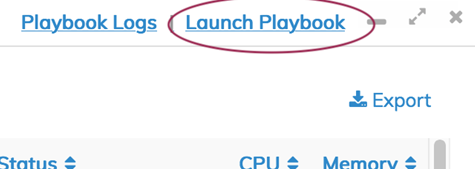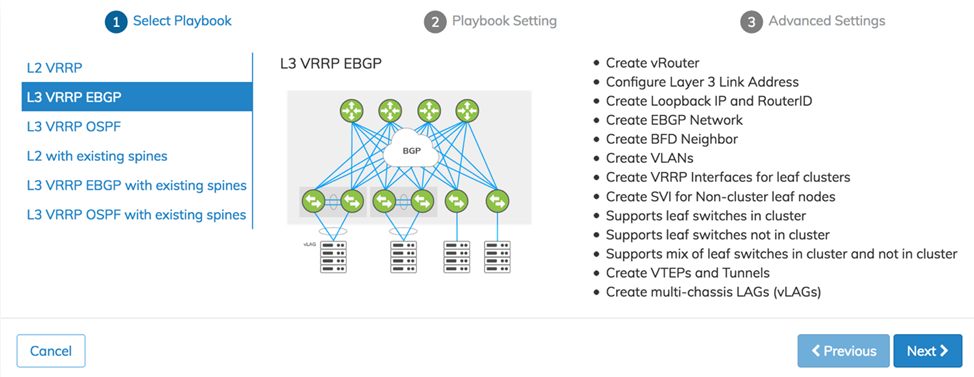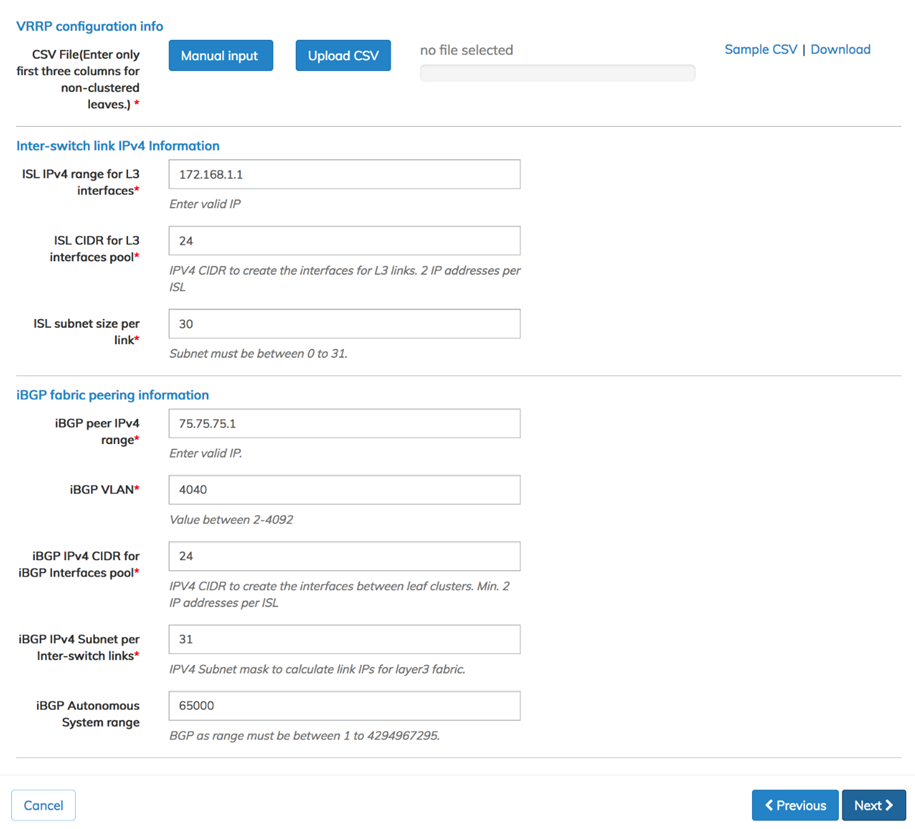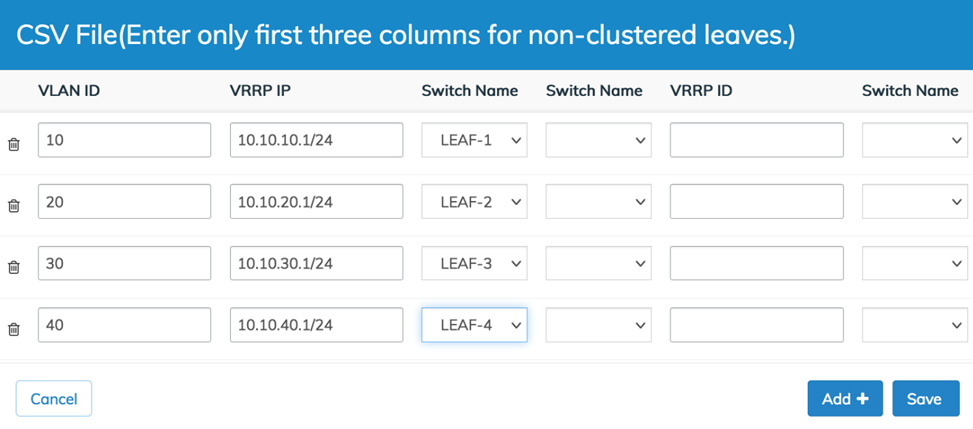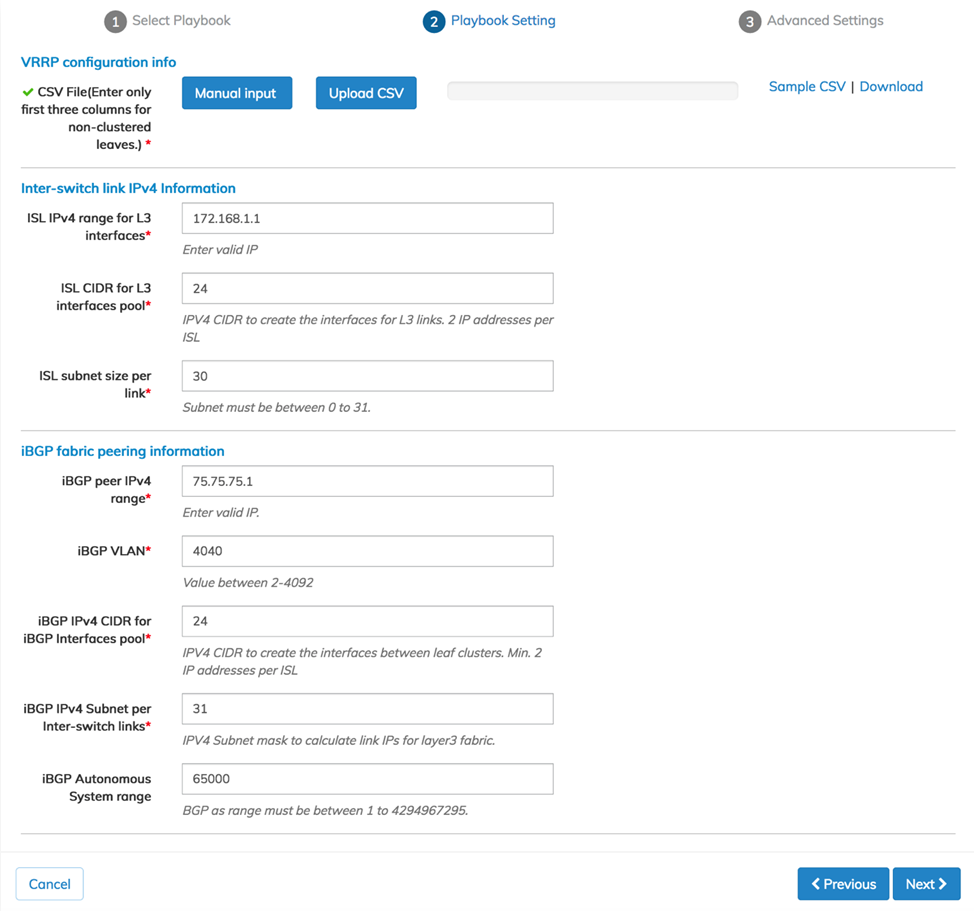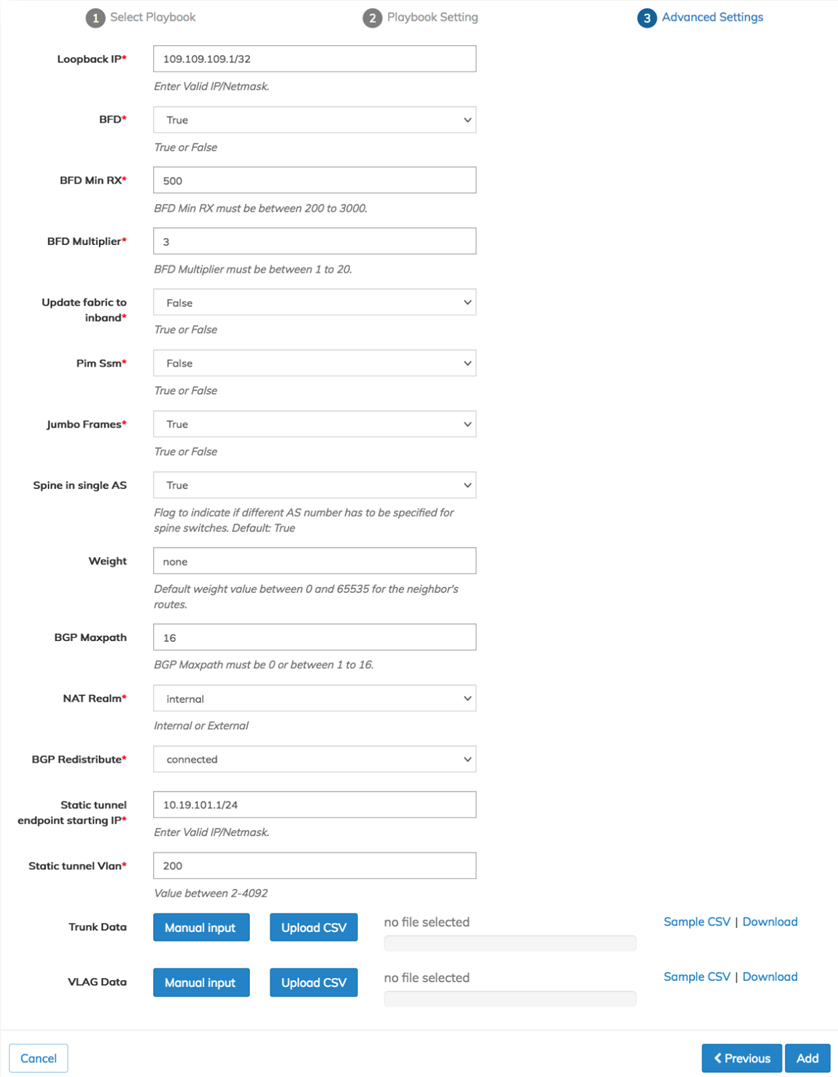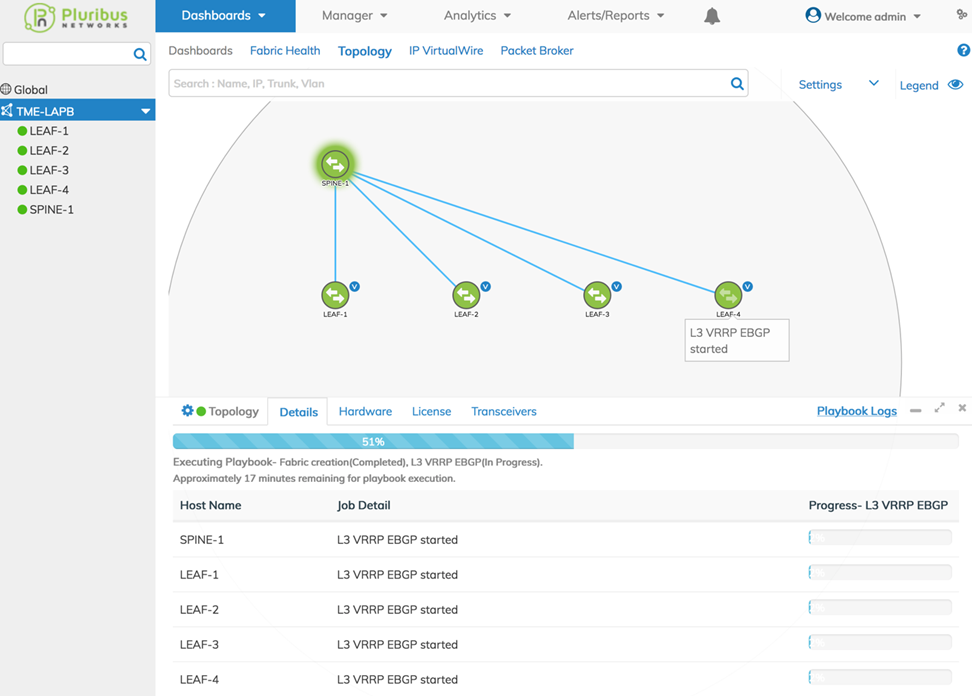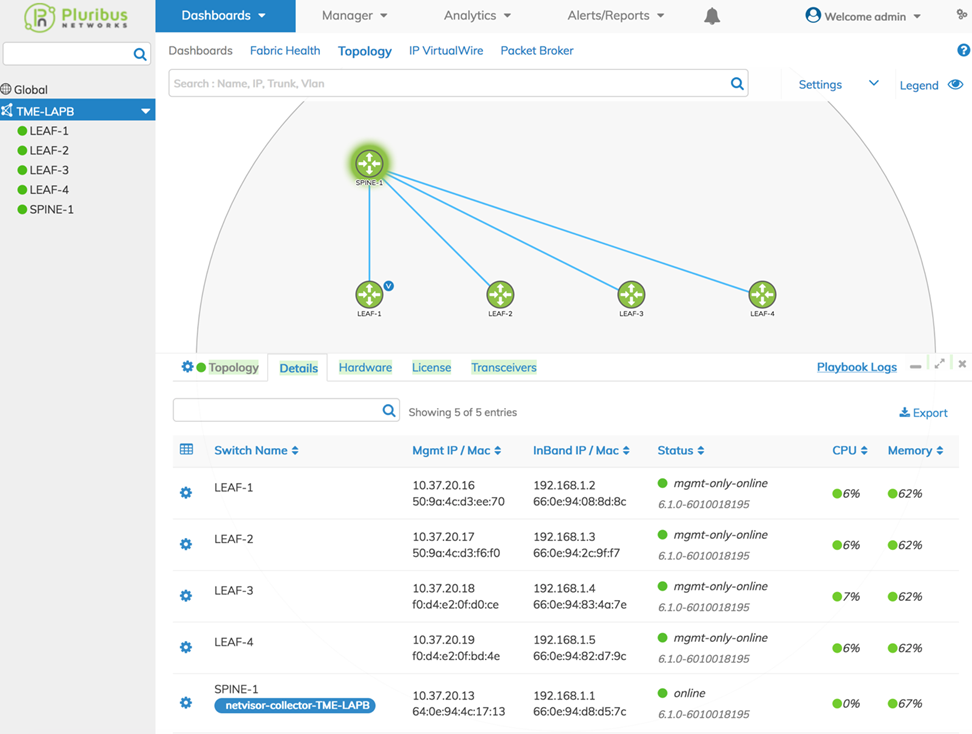
Configure the Playbook
Configure the Playbook
At this point in the process our basic fabric is set up, but we need to configure it for lab automation and/or packet broker environments.
To do this we will be using the “L3 VRRP BGP with Netvisor Spines” playbook.
|
1)Click on the blue Launch Playbook link in the details pane on the right of the screen. Launch Playbook |
|
|
|
|
|
2)From the popup menu, choose the L3 VRRP EBGP playbook from the left menu. This step brings us to a description of all the operations NetVisor UNUM will automate by applying this playbook. Note the creation of VTEPS and (VXLAN)Tunnels, essential to lab automation and Packet Broker Environments. Click on the blue Next button. L3 VRRP EBGP Playbook |
|
|
3)This action opens the Playbook setting page. We’ll be using the default Inter-switch Link and iBGP fabric peering information, but we do need to configure a VLAN per leaf to enable VTEP creation. Under the VRRP configuration info section, click on the blue Manual Input button. VTEP Creation |
|
|
4)To create a VXLAN overlay for lab automation, a VLAN ID, a VRRP IP, and Switch Name will need configuring for each leaf in the fabric. As these switches are not part of a cluster, no VRRP configuration will be created. Instead, NetVisor UNUM will use the information for VTEP and VXLAN tunnel automation. Leave the last three fields in each row blank. Use the blue Add+ button to create additional rows. Click on the blue Save button. Note: It is possible to have clustered switches in lab automation or Packet Broker environments. In these cases, please refer to the L3 BGP VRRP playbook example earlier in this guide. CVS File |
|
|
5)From the Playbook setting screen, click on the blue Next> button. VRRP Settings |
|
|
6)From the playbook Advanced Settings window, click on the blue Add button to accept the default advanced settings. Advanced Settings Default Values |
|
|
7)At this point, NetVisor UNUM automation creates the BGP fabric. Note the progress bars in the Details pane. NetVisor UNUM measures progress by task and provides a rough time estimate. These indicators can vary based on the switch models chosen for the fabric and used as a rough indicator of how long the fabric will need to complete. TIP: BGP fabrics are more complex than simple Layer-2 fabrics and can take longer to configure depending on the configuration choices made and the switch models. In the case of our five-switch fabric, given the switches we are using, we can expect the playbook configuration to last for around 10-15 minutes. Lab Provisioning Progress |
|
|
8)Once the process completes, an L3 BGP fabric has been created along with VTEPS, a full mesh of VXLAN tunnels, and is ready for use in a lab automation (VW) or Packet Broker environment. Fully Configured Lab Environment |
|

